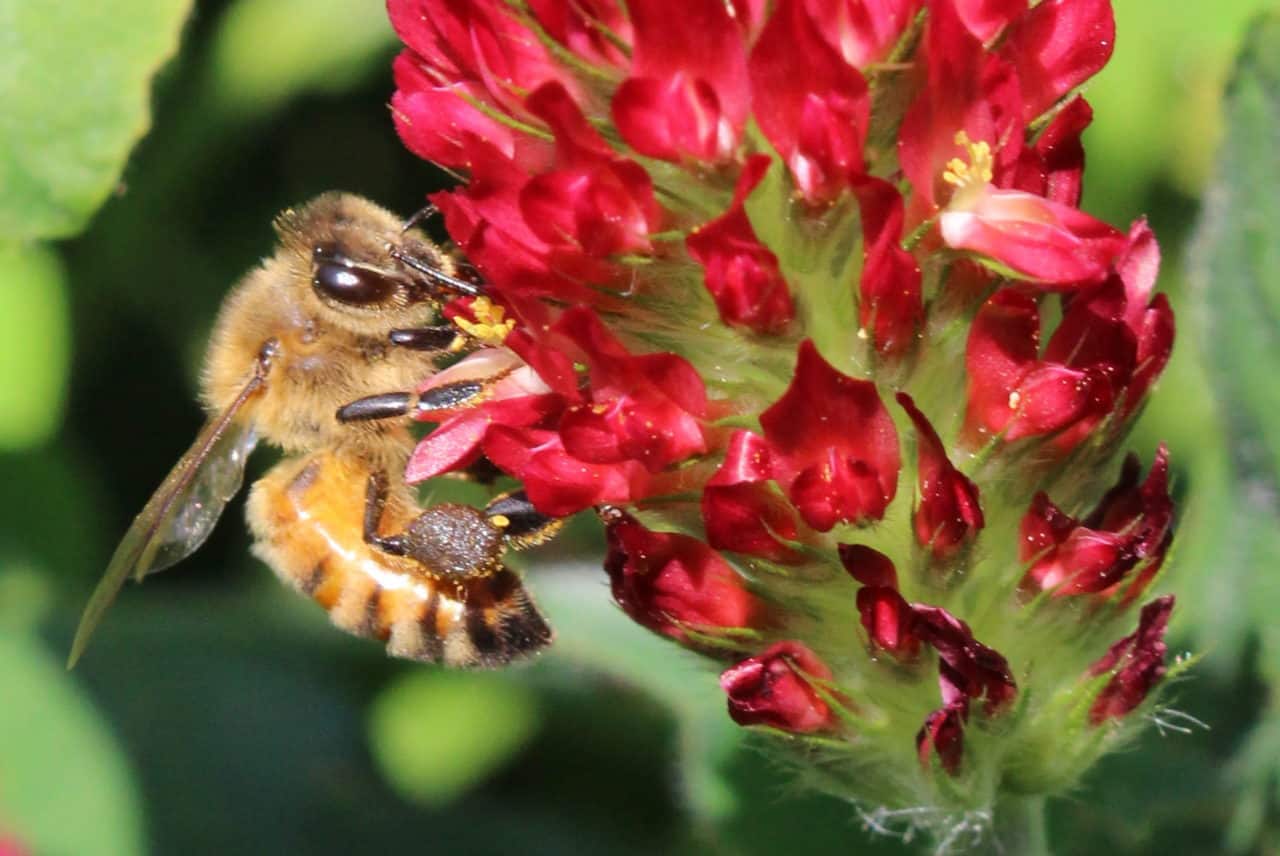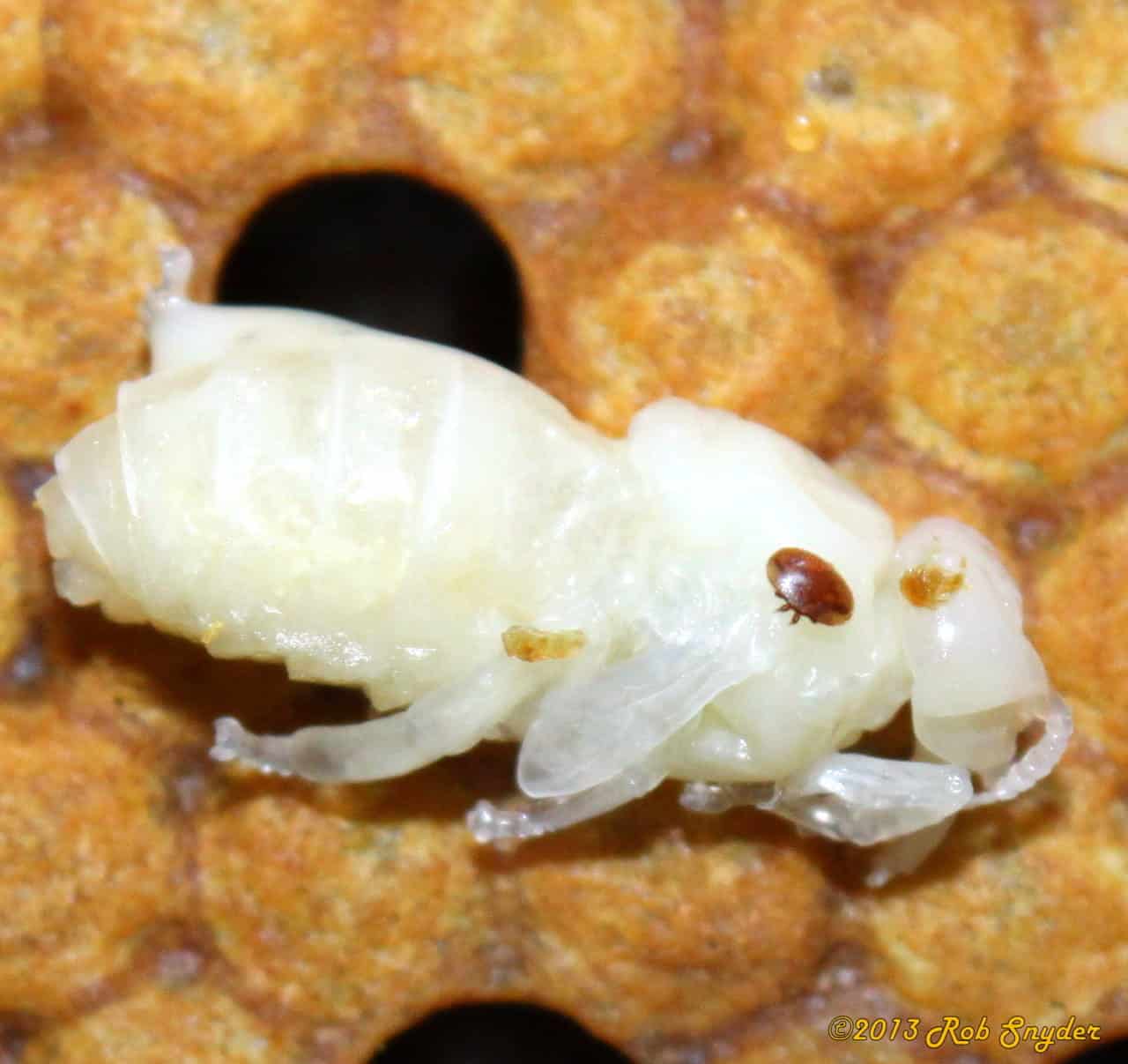On August 2 and 3, 2015, we had an amazing series of groundbreaking festivities to celebrate the construction of the new Bee and Pollinator Research Lab, that will be built on the St. Paul campus of the University of Minnesota beginning this fall. Beekeepers and friends from across the nation came to celebrate with us, and U.S. Representative Betty McCollum, Minnesota Representative Alice Hausman, President Eric and Karen Kaler, Jack and Betty Thomas from Mann Lake, Ltd, and Lori K. Watso, Secretary/Treasurer of the Shakopee Mdewakanton Sioux Community were but a few of our fun guests. This 10,500 square foot facility will be built…
Bears and Bees in the Sunshine State
Compared to viruses, Varroa mites, Nosema, pesticide damage, and the myriad of other problems we are facing, bears (Florida black bears of course) are one of the more (if not the most) straightforward problems beekeepers have in terms of keeping their bees alive. On most occasions a good electric fence will do the trick, but for some reason bears seem to have been more of a problem in Florida than usual. Yards that have never had a problem will be completely destroyed overnight even with a fence. I personally had one of my yards demolished with an electric fence within a fenced pasture. They came…
Clover Seed Pollination
Clover seed is an important crop grown in western Oregon that benefits rom hired honeybee colonies to boost yields. The Willamette Valley has an ideal climate for seed production with high annual rainfalls that allow growing without irrigation but infrequent rains in July and August allow seed to be harvested with limited risk of moisture damage. There are three main types of clover grown for seed in Oregon with all belonging to the Trifolium genus of the Fabaceae family. They are red clover (T. pratense), crimson clover (T. incarnatum) and white or Dutch clover (T. repens). In addition to clovers the Fabaceae family includes other…
Meadowfoam Pollination
May in the Willamette Valley is a time of lush green fields of grazing pasture and grass seed crops covering the flatlands along the I-5 corridor from Eugene to Portland. These verdant fields are punctuated by small plantings of dense, low growing, brilliantly white flowers, appropriately called Meadowfoam. Meadowfoam (Limnanthes alba) is an annual oilseed crop with a native range from Vancouver Island, BC to northern California. The oil derived from Meadowfoam seeds contains long-chain fatty acids that are very stable relative to other vegetable oils. This resistance to degradation make it a valuable ingredient to prolong shelf life of products and it is of…
Colony Loss 2014 – 2015: Preliminary Results
Nathalie Steinhauer1, Karen Rennich1, Kathleen Lee2, Jeffery Pettis3, David R. Tarpy4, Juliana Rangel5, Dewey Caron6, Ramesh Sagili6, John A. Skinner7, Michael E. Wilson7, James T. Wilkes8, Keith S. Delaplane9, Robyn Rose10, Dennis vanEngelsdorp1 1 Department of Entomology, University of Maryland, College Park, MD 20742 2 Department of Entomology, University of Minnesota, St. Paul, MN 55108 3 United States Department of Agriculture, Agricultural Research Service, Beltsville, MD 4 Department of Entomology, North Carolina State University, Raleigh NC 27695 5 Department of Entomology, Texas A&M University, College Station, TX 77843 6 Department of Horticulture, Oregon State University, Corvallis, OR 97331 7 Department of Entomology and Plant Pathology,…
Variable Efficacy of Mite Treatments?
Variable efficacy of mite treatments has been a constant battle for beekeepers in the past 28 years. However, there are some things we can do in the colony to increase a treatment’s efficacy. Many treatments available to beekeepers are spread through the hive by the bees and also by the bees fanning and ventilating the hive. This ventilation is a crucial part of the hive as a whole since pheromones are spread through the hive via ventilation and traffic from worker, queen and drone bees. Through my experience, and especially over the past 8 years, I have noticed many different types of beekeepers: there are…
Oregon State Sentinel Apiary
Spring has come early to western Oregon and it means that monitoring and sampling of colonies in the newly established sentinel apiary is already underway. The sentinel apiary is located at the Oak Creek Center for Urban Horticulture (OCCUH) on the western edge of the Oregon State University campus in Corvallis. The location provides a diversity of forage including natural, agricultural and low density urban areas. The OCCUH apiary is maintained for research and teaching purposes as part of the OSU Honeybee Lab and Oregon Master Beekeeper program. The apiary consists of colonies in a…
I prepped my honey bees for winter, but they died. What happened?
Disclaimer: It is sometimes difficult to piece together a post-mortem of your hive. The best way to get your bees to overwinter is to plan ahead. It is disheartening when hives die, but you are planning ahead *RIGHT NOW* to increase your survivorship by learning more. A few questions: How heavy were your brood boxes going into winter? Did the bees have enough resources to make it through winter? In Minnesota, we build up our colonies into 3 deeps and leave 75-100 lbs. of honey for the bees to make it through winter and 3-5 frames of pollen to give the bees enough protein to…
National Colony Loss and Management Survey Preview
It's that time of the year again. Flowers are coming into bloom and our bees are beginning to get a bit of cabin fever as they start to venture for new forage. As April approaches and Spring gets its start the 2014 - 2015 National Colony Loss and National Management Survey will be ready to accept submissions starting April 1st and continuing until April 30th. The results that are received from this survey provide invaluable information that helps us obtain a clear picture of honey bee health throughout the country. Without the aid of the many beekeepers who participate in this survey we would never…
The Colony Loss Map is Up and Running
The marriage between data collection and GIS just got a little sweeter for the bees and their keepers around the country. Years of Winter Loss data are now accessible through a masterfully created, interactive web map. It has been a long time coming. We are so excited to continue to provide beekeepers with the information they need to keep healthier bees. Click the map to check it out! This is only the beginning so stay tuned as we create and build upon data accessibility for everyone. Next year’s data will be added once the survey is complete. Sign up to take the surveys and you can add…

